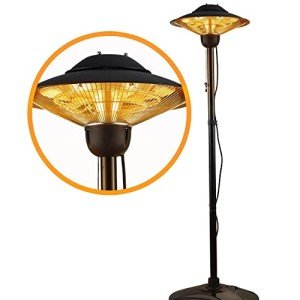How to Choose a Patio Heat Lamp Electric
When you're looking to heat your patio, you have many options. Electric heaters are more efficient than propane models that require fuel refills. They can be heated instantly by pressing a button or flipping a switch.
mouse click the following post don't emit gases that could be an health risk. Some have adjustable settings for heat for different distances.
Type of Heater
With the right patio heater, you will be able to comfortably enjoy your outdoor living spaces well into the night, and throughout the seasons. There are a variety of patio heaters, such as freestanding propane and natural gas models as in addition to ceiling or wall-mounted electric radiant heaters. Your choice will depend on the size of the space, the power sources available, and your personal preferences.
The majority of patio heaters utilize electricity, natural or liquid gas to generate heat. They emit heat through a combination convection heating and radiant heating. Their output of heat is measured in watts and then converted to British thermal units (BTUs) for comparison. Certain models come with adjustable heat settings to give you more flexibility.
Patio heat lamps include a burner mounted on a pole, and an aperforated screen that reflects the flames and radiates heat downwards to warm objects, people and furniture. Some come with a reflector above the burner that can be plated with silver to decrease the amount of heat that is lost upwards.
free standing electric patio heaters are among the most common patio heaters. freestanding electric patio heater are able to heat multiple tables quickly and evenly. These heaters are portable and run on propane tanks or connected to your natural gas line. The latter is more convenient and has lower upfront costs, but requires fuel.

A growing number of homes are equipped with natural gas lines, making these the perfect solution for those who prefer to use a gas-powered patio heater. They are simple to install, but they require a gas line that's properly installed and functioning to be safe. Portable natural gas heaters are available with extension hoses to overcome this issue, however they could be a trip risk and can create an additional fire hazard when not in use.
Safety
Most electric patio heaters are safe to use in enclosed areas due to their ability for heat to radiate outward, instead of upward toward things that ignite, like the roof. They are not designed for use under an unprotected roof. The heater should be located at least 6" away from the ceiling, or 18" away from the wall in order to prevent fire hazards.
The propane and gas patio heaters are generally only suitable for use in enclosed areas that have a durable cover that is made for outdoor use. These covers are usually made of fire-retardant fabric and have a roof which can be closed. The safety concerns with these types of outdoor patio heaters are related to the fumes and flames they release. They should be placed away from flammable items like curtains and chairs.
When installing an electric patio heat lamp or any other type of patio heater, be sure to adhere to the manufacturer's instructions and safety measures carefully. Make sure you select the one with UL and CSA certifications, and also read the owner's guide carefully. Be especially careful when it comes to pets and children, and ensure that the heater is not near them when it's running. Some patio heaters that are freestanding such as EUROM's have an automatic tipping safety that shuts the device off when it falls.
If your patio heater is connected to a natural gas line, you should examine it regularly and have it tested by a qualified professional for leaks. If the line has to be replaced, be certain to get an authorized plumber. A professional will be able to determine if the line needs to be connected to an underground pipe or not. Additionally, a professional can make sure the heater for your patio is connected into an outlet that's GFCI (ground fault circuit interrupter) rated to protect against electrical shocks and fires.
Installation
The height of a patio heater will determine the amount of heat it emits into the space. The heater should be positioned away from surfaces such as wood and plastic that can deform. It is possible to mount the heater on a wall, structure or other surface using conventional mounting brackets. Some models feature soft starters that lowers the current at the highest level to ensure your circuits are protected.
